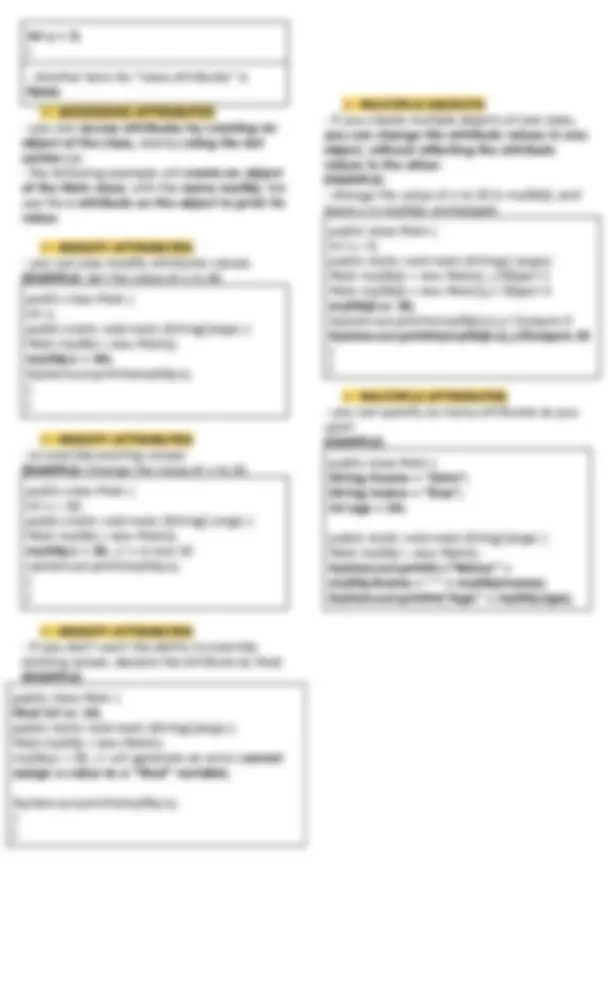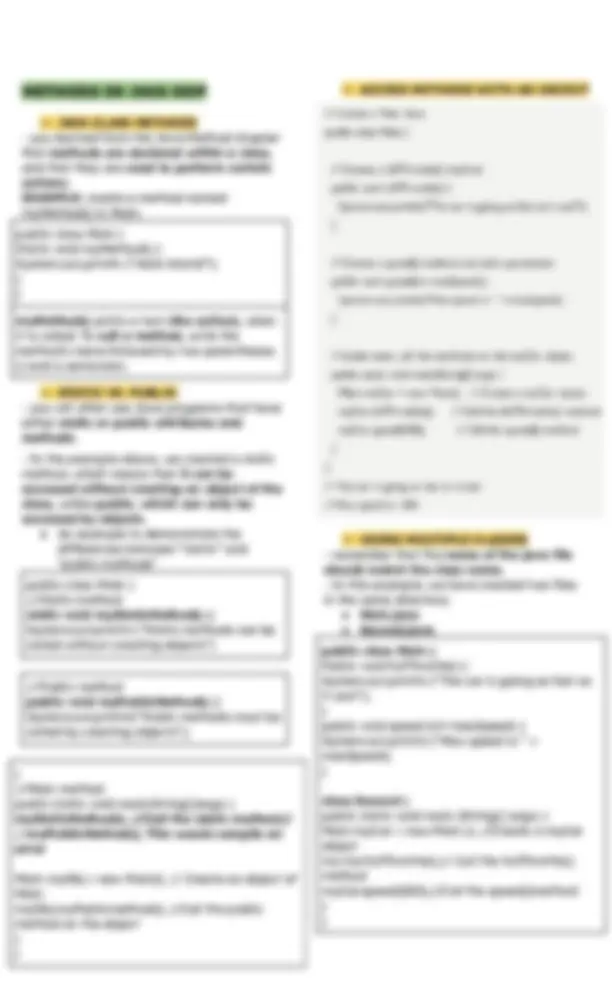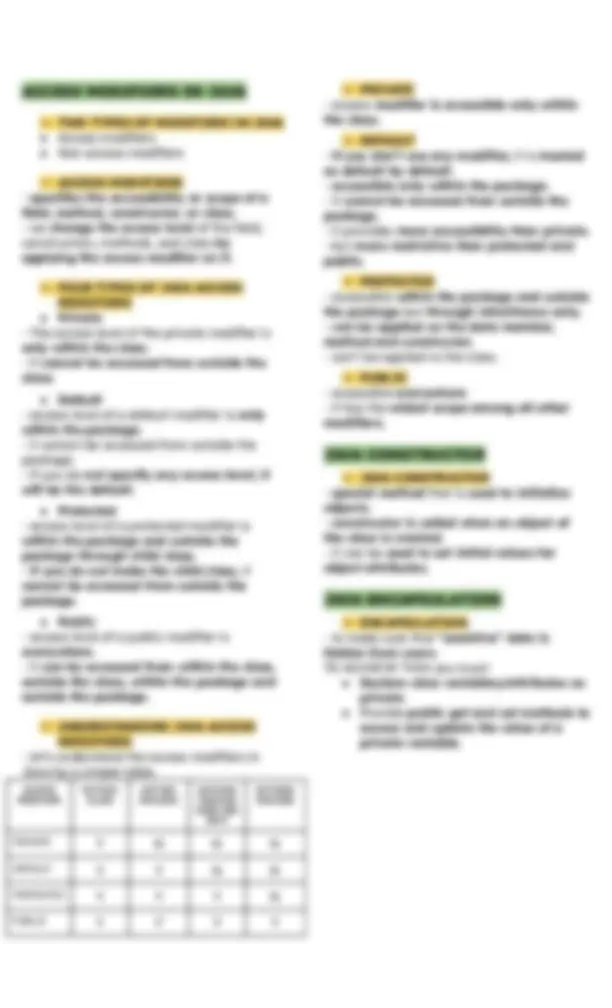





Study with the several resources on Docsity

Earn points by helping other students or get them with a premium plan


Prepare for your exams
Study with the several resources on Docsity

Earn points to download
Earn points by helping other students or get them with a premium plan
Community
Ask the community for help and clear up your study doubts
Discover the best universities in your country according to Docsity users
Free resources
Download our free guides on studying techniques, anxiety management strategies, and thesis advice from Docsity tutors
This study tool is about Programming Language focusing on basic programming languages
Typology: Study notes
1 / 6

This page cannot be seen from the preview
Don't miss anything!




● While working under calling process, arguments is to be passed. ● These should be in the same order as their respective parameters in the method specification. ● Parameters can be passed by value or by reference. ● Passing Parameters by Value means calling a method with a parameter. ● Through this, the argument value is passed to the parameter. public class swappingExample { public static void main (String[] argos) { int a = 30; int b = 45; System.out.println (“Before swapping, a = “+ a +” and b= “+b); swapFunction(a,b); System.out.println(“\n*Now, Before and After swapping values will be same here * : ”); System,out.println (“After swapping, a = “+a+” and is “+b); } Public static void swapFunction (int x, int y) { System.out.println(“Before swapping(Inside), a= “+ a +” b = “+ b); Int z= x; x=y; y=z; System,out.println (“After swapping Inside), a = “+a+”b = “+b); ● Write a Java method to display the middle character of a string. ● If the length of the string is odd there will be open middle character.
● Access modifiers ● Non-access modifiers ➢ ACCESS MODIFIERS